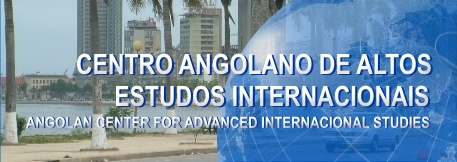![]()
|
|
 |
|
|
|
|
|
|
|
|
|
|
THE PROVINCE OF MALANGE This is the second province in Angola whose capital city has the same name as the province. Malanje has a great number of tourist attractions, like the Pedras Negras de Pungo Andongo, Morro do Bongo, Mesa da Rainha Ginga (Queen Ginga's Table), among others.
The greatest dam in the country is in Malanje, in the municipality of Kapanda, There are 13 municipalities in Malanje: Malanje, Massango, Marimba, Calandula, Caombo, Cunda Dia Baza, Cacuso, Cuaba Nzogo, Quela, Mucari, Cangandala, Cambudi-Catembo, Quirima Uquembo. Agriculture is the main economic activity, the main ingredients of the local diet are kizaca, usse, game, kihanza, ginguinga, which are always accompanied by mandioc or com porridge. There are three production centres of handicraft in Malanje, in the municipalities of Marimba, Quirima and Massango, where the products manufactured are baskets, sofás, dolls, seives, pestles and mortars and the hats of the sobas, or chiefs, called kijunga, wooden combs, pipes and many other objects. Instruments which are used in the people's daily lives are the bamboo spoon and the jungofe. There is a large number of e1hnic groups in this province, namely the Gingas, Bângalos, Dongos, Ngolas, Songos, Quirima, Massue1a, Maholo, Maiacas, Vungalos, Mahungos, Minungos, Xingue and Luindos, which are divided in three linguistic groups: Quimbundo, Quicongo and Ambundu.
Nature
Reserves There are also many birds, such as ducks and other water fowl, jova, guinea fowl, partcidge, doves and green pigeons, among others. The Kangandala National Park, was established on 25th June, 1970, having previously been classified as an Integral Natural Reserve on 25th May, 1963. It has an arca of 600 km2.
Rivers
Angling
Forest
Reserves Luondo and MiJando Forest Reserve: There are also the reserves of Luondo and Milando in the municipalities of Cangandala and Kundia-Dia. Samba-Lucala Forest Reserve: This area has 400 km2 and is constituted by a mosaic ofvalleys and savannahs with vegetation typical to the plain and to the coastline, for example: Annona, Cobretum and Piliostigma. It is flanked to the north and west by the River Kionga and to the south and east by the River Cauneia.
Main
Tourist Attractions Pedras Negras de Pungo Andongo, 116 km. from the city are also well worth a visit. This mixture of sheer beauty and mystery rises up suddenly from the vegetation, a scene of extraordinary interest. Huge granite stones of staggering power were the scene of orgies and torture sessions held by Queen Jinga, according to legend. The main tourist attractions in Malange are the fumas de cacolo, in the municipality of Cacuso, the Isle of Kwanza, in the municipality of Cangandala, cucho-zamussango, in the municipality of Massango, Morro do Bongo in the munucipality of Quela, Pedras Negras de Pungo-Andongo, Mesa da Rainha Ginga, in Calandula, Kalandula Falls, Luondo Falls, in the municipality of Cangandala, S. Francisco José Falls in Kambundi - Katembo, the Colo Falls, and the Rapids of Luino in the municipality Kunda Dia-Base.
Cultural
Tourism As far as religious buildings are concemed, there is the Evangelical Church at Quêssua and as for funerary constructions, the Tomb of Rainha (Queen) Ginga Mbandi, the tomb of Ngola Mbandi, The Cemeteries at Cambundi Catembo and at Kizenga, the Tomb of Zé Machado, and the tombs in the historic cemeteries in the municipalities of Caculama e Cacuso. Capital: Malange; Area: 97.602 sq. Km; Population: 700.000 inhab.; City Councils: 14 – Massango, Marimba, Calandula, Caombo, Cunda-dia-baza, Cacuzo, Cuaba Nzogo, Quela, Malange, Mucari, Cangadla, Cambundi-Catembo, Luquembo, Quirima; Climate: Tropical; Main Products: agricultural: cotton, mandioc, peanut, beans, corn, sunflower, rice, sisal; minerals: diamonds, radioactive minerals, copper; Others: farming.
|
|
|